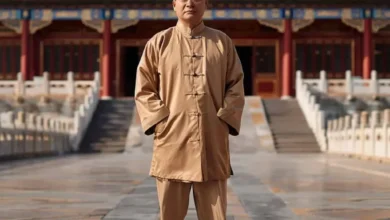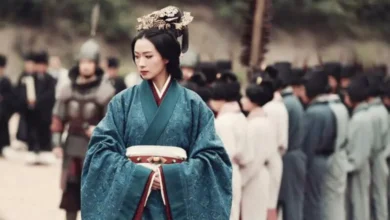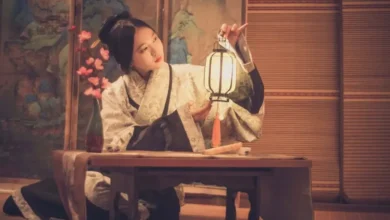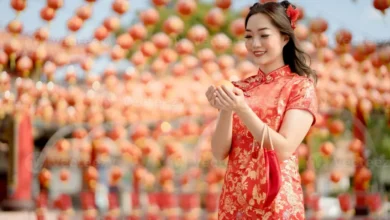The Glittering Heritage of Southwest China
The Miao (also known as Hmong in some contexts), one of China’s 56 ethnic groups and the country’s fifth-largest minority with over 9 million people, are renowned for their vibrant traditional costumes, particularly those adorned with intricate silver ornaments.
Primarily residing in the mountainous regions of southwestern China—Guizhou, Hunan, Yunnan, Guangxi, Sichuan, and Hainan—the Miao’s attire reflects their ancient history tracing back to the pre-Qin period (2100–221 BC) in the Yangtze River basin. Their clothing is a “wearable history book,” encoding migration stories, totems, and folklore through embroidery, batik, and silverwork.
Silver decorations, a hallmark of Miao culture for over 400 years, symbolize wealth, marital status, protection from evil spirits, and social prestige, often weighing several kilograms and jingling melodiously during movement. Women, in particular, preserve this tradition, starting collections at birth as a dowry passed down generations. Men’s attire is simpler but incorporates silver in festive contexts. With over 100 subgroups, costumes vary by branch (e.g., Black Miao, Short-Skirt Miao), but silver remains a unifying element.
Materials and Craftsmanship
- Fabrics: Handwoven linen, cotton, or hemp, often indigo-dyed for durability in humid climates. Techniques include batik (wax-resist dyeing), cross-stitching, brocading, and embroidery depicting flowers, animals, dragons, phoenixes, mountains, and historical events like migrations or battles.
- Silver Ornaments: Crafted from pure silver (or alloys like white copper for affordability), using 12 traditional techniques: casting, smelting, repoussé (hammering from the reverse), forging, engraving, knitting, coiling, cutting, filigree, chasing, and inlaying. Patterns draw from nature (e.g., peonies for reunion), mythology, and totems; no natural silver mines exist in Miao areas, so pieces were historically made from melted coins or ingots. Modern pieces use lighter alloys, but traditional ones can weigh 10–15 kg total.
- Production: Primarily by male silversmiths (amateurs working seasonally) in “silver villages” like those near Kaili, Guizhou. A single headpiece takes months; embroidery is women’s domain, taking 1–2 years per outfit. Government subsidies since the 1950s support this intangible cultural heritage.
Women’s Traditional Attire
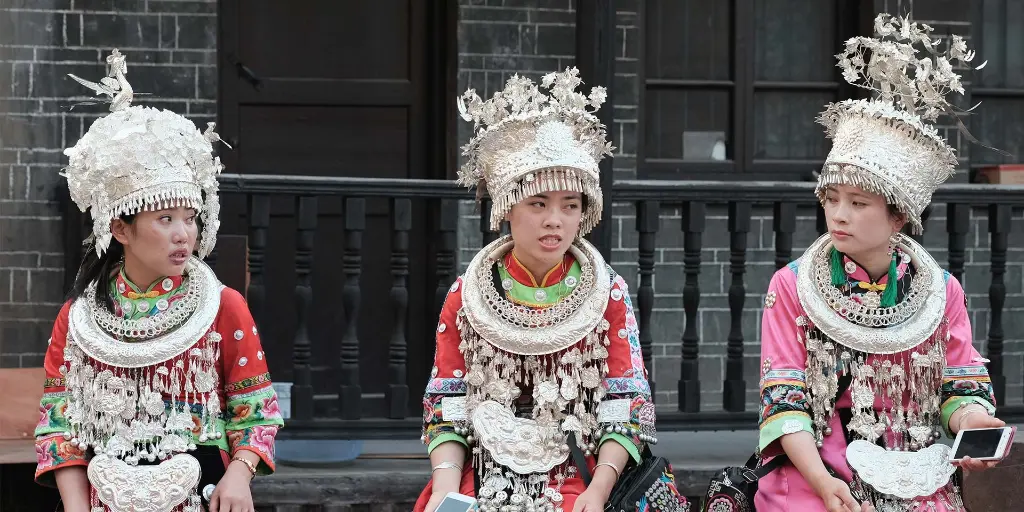
Miao women’s costumes emphasize elaborate, colorful layers for festivals like the Miao New Year (Neng Yang), Sister Festival (Guxiang), or harvest celebrations (e.g., Huashan, Siyueba). Everyday wear is simpler, but festive outfits transform them into spectacles of sound and shine. Subgroups are often named by skirt length or color (e.g., Red-Band Miao for headscarves).
See also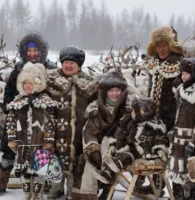 Yakut (Sakha) Winter Costume
Yakut (Sakha) Winter CostumeKey elements:
- Upper Garment: Short, high-collared jacket (often indigo or black) with embroidered collars, cuffs, and front panels (stomacher). Festive versions add vests or capes with geometric or floral patterns; some feature “pigtail embroidery” of wild peonies.
- Skirt: Pleated (30–40 folds), either full-length (to ankles) or short (knee-length, as in Short-Skirt Miao). Made of batik-dyed cloth in bright hues (red, blue, green); edges embroidered with symbolic motifs like phoenixes or city walls representing ancient strongholds.
- Headwear:
- Everyday: Checkered or cyan scarves wrapped around the head.
- Festive: Elaborate silver crown (30–50 cm high) or horn-like headdress (50–70 cm long, resembling bull horns) topped with phoenixes, dragons, feathers, or tassels. Includes combs, hairpins (with floral or butterfly designs), and bells; some have engraved plates with huntsmen, horses, or fish-holding birds.
- Silver Ornaments (head-to-toe, up to dozens per outfit):
- Neck and Chest: Up to 12 layered necklaces, rigid neck rings (simple geometric to complex shapes), collars, and big silver locks (worn from childhood for protection until marriage). Often 19–31 cm wide, with hook clasps; patterns include prosperity symbols (e.g., Chinese characters for longevity).
- Ears and Arms: Long pendants or earrings (up to 50 cm), multiple bracelets (5–8 per wrist, e.g., whorl, worm, or dragon-head styles), and armbands.
- Waist and Lower Body: Wide silver belts (covering the midsection), girdles with bells, and rings; sometimes a silver dagger sheath.
- Total Weight: 5–15 kg, creating a “dazzling” effect with clattering sounds during dances.
- Accessories: Aprons (embroidered), sashes, and baby carriers with silver for children (e.g., bonnets with animal motifs).
- Footwear: Simple embroidered cloth shoes or sandals.
During festivals, women parade in these outfits, the silver jingling to the rhythm of lusheng (bamboo pipe instrument) dances, attracting suitors and showcasing family wealth.
Men’s Traditional Attire
Miao men’s clothing is more practical for farming and herding, influenced by Han styles, but incorporates silver for status during rituals like the Guzang Festival (ancestor worship every 12 years).
Key elements:
See also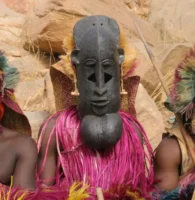 The Iconic Traditional Dogon Costume: A Cultural Treasure
The Iconic Traditional Dogon Costume: A Cultural Treasure- Upper Garment: Linen jacket (short or long-sleeved) with embroidered collars and geometric patterns; festive versions add woolen blankets over shoulders or vests with dragon/phoenix motifs using “cocoon embroidery.”
- Lower Garment: Loose trousers (black or indigo) or shorts; sometimes pleated skirts in rituals.
- Headwear: Turban, cap, or simple silver hairpin; during Guzang, elaborate headdresses with feathers.
- Silver Ornaments: Fewer than women’s—neck-rings, bracelets, cigarette cases, or belts; leaders wear full sets weighing several kg, trimmed with otter fur (now protected).
- Accessories: Woolen shawls, staffs, and lusheng instruments.
- Footwear: Cloth shoes or boots.
In gender-specific rituals, men may adopt women’s silver-heavy attire symbolically.
Cultural and Social Significance
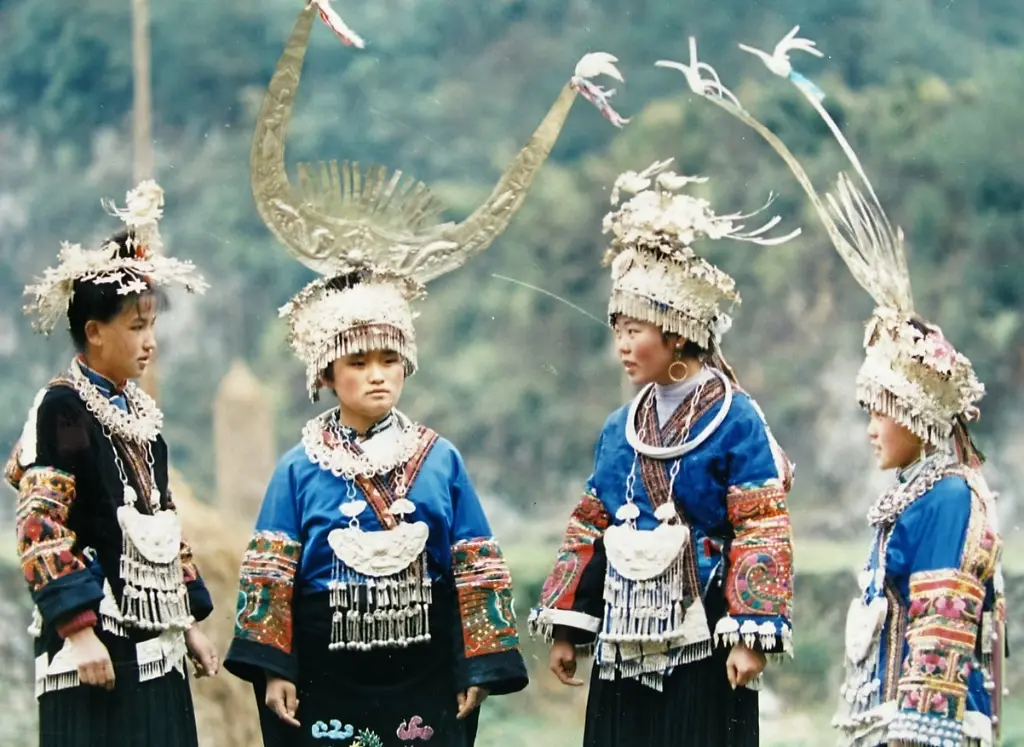
- Symbolism: Silver represents light, health, and fortune, warding off evil (e.g., during migrations from ancient wars). Ornaments encode history: patterns depict battles, totems (e.g., dragons for power), and legends (e.g., the silver crown saving the Miao King). Embroidery records folklore, like the golden pheasant inspiring skirts. A Miao proverb states, “Without silver or flowers, a girl is not a girl,” tying beauty to heritage.
- Social Role: Silver as dowry signals family wealth and marital eligibility; collections begin at a girl’s birth. In weddings, the bride’s attire (handmade by family) affirms clan ties. Festivals like Miao Silver Accessory Festival (Fenghuang, Hunan, since 2006) showcase craftsmanship, fostering community and courtship.
- Religious and Identity Ties: Linked to animism and ancestor worship; silver bells invoke spirits. Costumes reinforce ethnic identity amid assimilation pressures, with over 480 sub-styles across five regional types (e.g., Southeastern Guizhou: ornate hats; Western Hunan: trousers).
- Preservation Challenges: Tourism in villages like Xijiang (Guizhou) boosts economy but commodifies traditions (e.g., mass-produced items). UNESCO-recognized intangible heritage; cooperatives and workshops (e.g., by master silversmiths) promote authenticity. Modern youth blend styles but value heirlooms for cultural pride.
The Miao silver-decorated costume is a testament to resilience, blending artistry with storytelling in China’s diverse ethnic tapestry. For visuals of specific subgroups or festival examples, more details can be provided!

